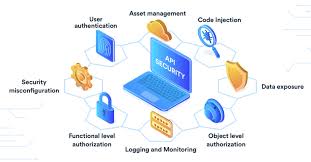Application Programming Interfaces (APIs) are the backbone of modern software applications,
enabling communication between different systems. As APIs become more integral to digital
services, securing them becomes essential. These methods help ensure that only authorized
users and applications can access the data and services provided by APIs. This article explores
how modern authentication techniques enhance API protection and secure sensitive
information.
Table of Contents
1. Understanding the Basics

API security is crucial for maintaining digital services' integrity, confidentiality, and availability.
With the increase in cyber threats, it has become even more critical.
Modern authentication methods involve verifying the identity of users and applications before
granting access. This process typically involves using credentials such as API keys, tokens, or
digital certificates. By requiring authentication, APIs can prevent unauthorized access and
reduce the risk of data breaches.
Barracuda says, “API security is the practice of protecting application programming interfaces
(APIs) from vulnerabilities, threats, and unauthorized access to ensure the integrity,
confidentiality, and availability of data and services.”
2. The Role of OAuth 2.0 in Securing APIs
OAuth 2.0 is a widely used authorization framework that enhances API Protection by providing
secure access delegation. It allows third-party applications to access user data without revealing
sensitive credentials.
OAuth 2.0 is particularly beneficial for APIs integrating multiple services or platforms. It provides
a secure way to grant permissions, ensuring only authorized applications can access specific
data. This reduces the risk of unauthorized access and data breaches.
3. Using OpenID Connect for Enhanced User Authentication
OpenID Connect (OIDC) builds on top of the OAuth 2.0 framework, adding an identity layer to
improve user authentication. It allows APIs to verify end-user identity based on authentication
performed by an authorization server. OIDC provides a standardized way to authenticate users
and obtain basic profile information.
By integrating OpenID Connect, APIs can offer single sign-on (SSO) capabilities, enhancing
user experience while maintaining robust security. SSO allows users to access multiple services
with a single login, reducing the need to manage multiple passwords.
OpenID Connect also supports using ID tokens, which are digitally signed and encrypted to
ensure authenticity. These tokens provide additional security by verifying the user’s identity is
legitimate, further strengthening API Protection.
4. Implementing Multi-Factor Authentication for APIs
Multi-factor authentication (MFA) adds an extra layer of security to the API authentication
process by requiring users to provide more than one verification form. Common factors include
something the user knows (password), something they have (smartphone), or something they
are (biometric data).
Implementing MFA for APIs significantly reduces the risk of unauthorized access. Even if
attackers obtain the user's password, they still need the second factor to access the API. This
makes it much harder for malicious actors to breach API Protection.
APIs can provide a higher level of security and prevent unauthorized access to critical resources
by combining multiple authentication factors.
5. The Importance of Regularly Updating Authentication Methods
Keeping authentication methods up-to-date is crucial for maintaining strong API Protection. As
cyber threats evolve, outdated authentication methods can become vulnerable to attacks.
Regular updates and patches ensure the API remains secure against new vulnerabilities and
threats.
Regular security audits and assessments can help identify potential weaknesses in API
authentication. By continuously improving and updating security measures, APIs can stay
ahead of cyber threats and ensure robust protection for users and data.
Modern authentication methods play a vital role in enhancing API Protection by verifying the
identity of users and applications accessing digital services. As cyber threats continue to evolve,
organizations need to adopt and maintain robust authentication methods to safeguard their APIs
and ensure secure communication between systems.










